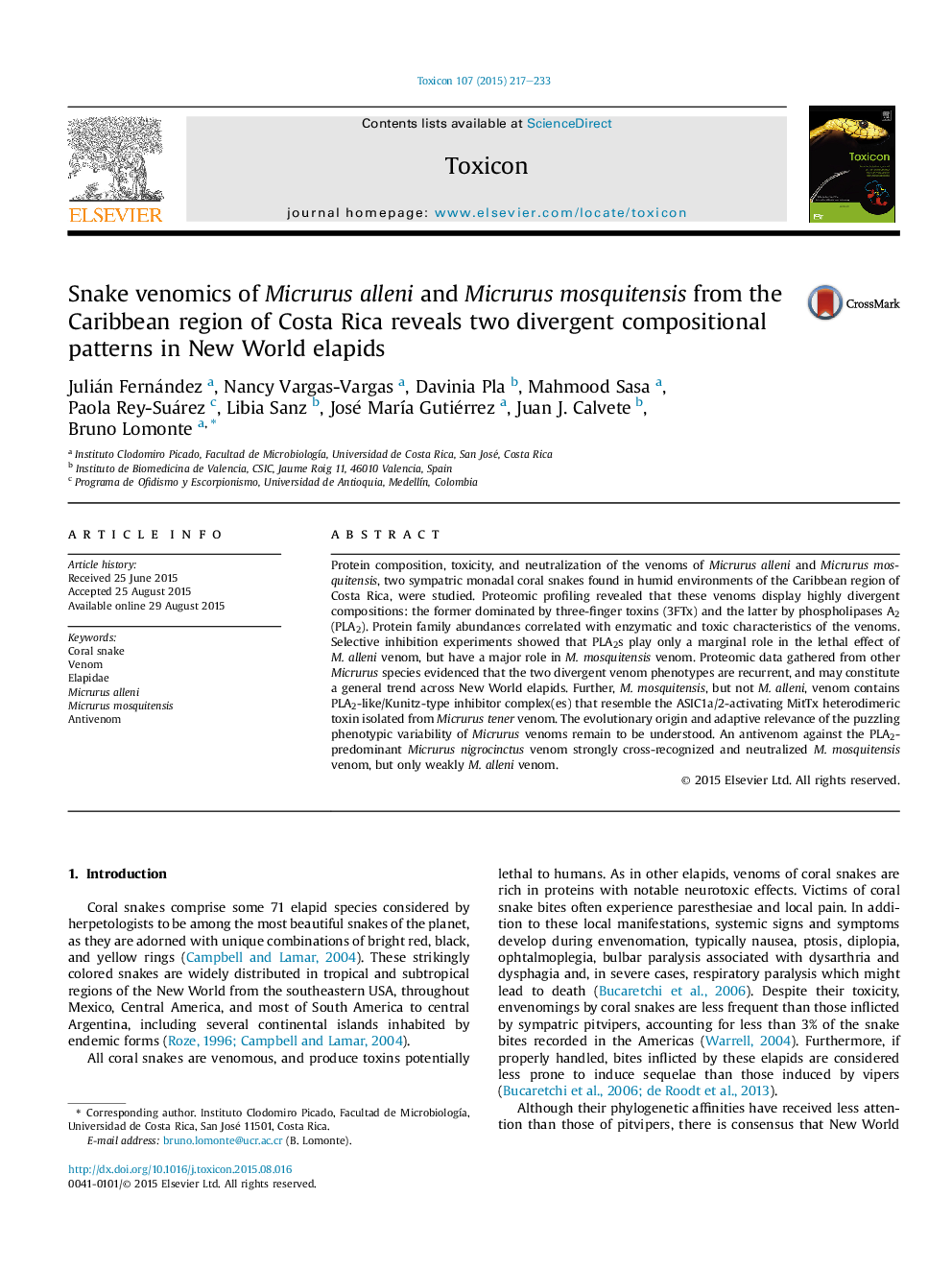| کد مقاله | کد نشریه | سال انتشار | مقاله انگلیسی | نسخه تمام متن |
|---|---|---|---|---|
| 2064287 | 1076833 | 2015 | 17 صفحه PDF | دانلود رایگان |

• The venom proteomes of Micrurus alleni and Micrurus mosquitensis are reported.
• Their venom compositions show two highly divergent protein profiles.
• Protein-family abundances correlate with functional and toxic activities.
• An antivenom to M nigrocinctus neutralized M. mosquitensis venom strongly, but M. alleni weakly.
• A dichotomy between 3FTx- and PLA2-predominant venom types exists across Micrurus.
Protein composition, toxicity, and neutralization of the venoms of Micrurus alleni and Micrurus mosquitensis, two sympatric monadal coral snakes found in humid environments of the Caribbean region of Costa Rica, were studied. Proteomic profiling revealed that these venoms display highly divergent compositions: the former dominated by three-finger toxins (3FTx) and the latter by phospholipases A2 (PLA2). Protein family abundances correlated with enzymatic and toxic characteristics of the venoms. Selective inhibition experiments showed that PLA2s play only a marginal role in the lethal effect of M. alleni venom, but have a major role in M. mosquitensis venom. Proteomic data gathered from other Micrurus species evidenced that the two divergent venom phenotypes are recurrent, and may constitute a general trend across New World elapids. Further, M. mosquitensis, but not M. alleni, venom contains PLA2-like/Kunitz-type inhibitor complex(es) that resemble the ASIC1a/2-activating MitTx heterodimeric toxin isolated from Micrurus tener venom. The evolutionary origin and adaptive relevance of the puzzling phenotypic variability of Micrurus venoms remain to be understood. An antivenom against the PLA2-predominant Micrurus nigrocinctus venom strongly cross-recognized and neutralized M. mosquitensis venom, but only weakly M. alleni venom.
Figure optionsDownload as PowerPoint slide
Journal: Toxicon - Volume 107, Part B, 1 December 2015, Pages 217–233